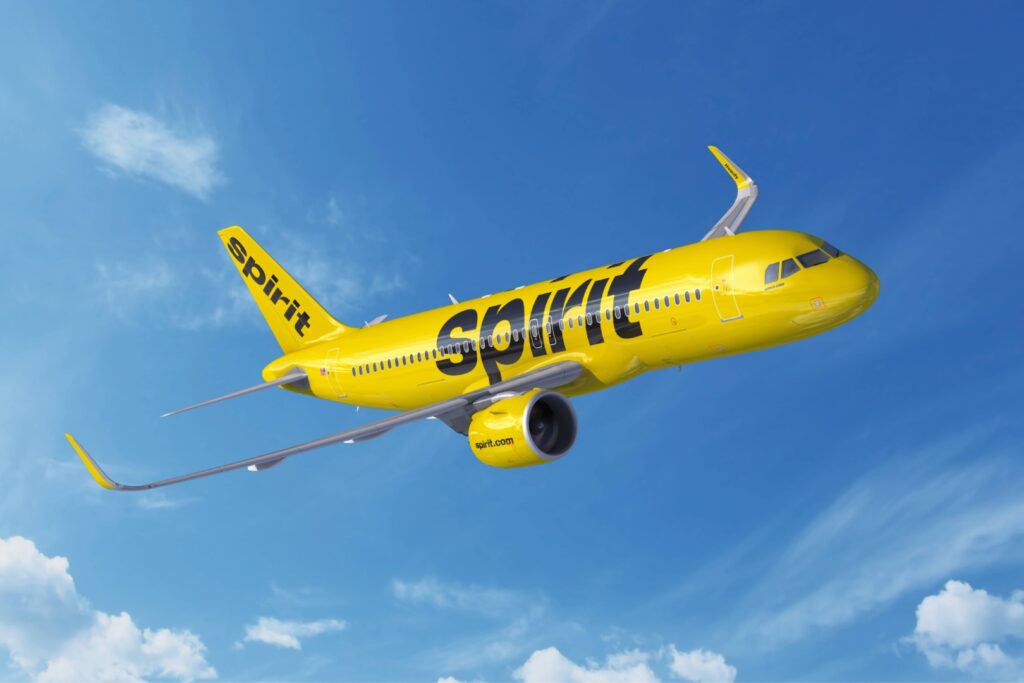Spirit Airlines has filed for Chapter 11 bankruptcy, a strategic move to stabilize its finances while keeping operations running smoothly. Known for its ultra-low-cost business model, the airline has faced mounting challenges, including over $1 billion in deferred debt, a $158 million quarterly loss this year and failed merger efforts with JetBlue and Frontier Airlines.
Don’t Miss:
According to a company statement, Spirit’s restructuring plan involves $300 million in new financing and $350 million in equity investments from bondholders, which will slash nearly $795 million in debt. The airline expects to emerge from bankruptcy by early 2025.
CEO Ted Christie assured passengers that the restructuring would not affect flights and bookings in an open letter to customers. “You can continue to book and fly confidently now and in the future,” Christie said. Spirit has pledged to maintain ticket sales, flights and loyalty programs without disruption throughout the process.
Spirit’s financial woes didn’t develop overnight. According to CNBC, the airline hasn’t turned a profit since 2019, when it lost $335 million. The COVID-19 pandemic significantly affected travel demand, hitting Spirit’s operations hard.
See Also: ‘Scrolling To UBI’ — Deloitte’s #1 fastest-growing software company allows users to earn money on their phones. You can invest TODAY for just $0.26/share with a $1000 minimum.
The recall of Pratt & Whitney engines in 2023 further strained the airline by disrupting fleet availability, while rising fuel costs and stiff competition from larger carriers put additional pressure on margins.
Regulatory hurdles compounded these challenges. In January, U.S. courts blocked Spirit’s $3.8 billion merger with JetBlue, citing concerns about reduced competition in the budget travel market.
Analysts warn, however, that more drastic measures, such as cutting routes or reducing flight frequencies, could still be necessary. Statista reported that Spirit’s total flight capacity declined by 33% to 27.7 billion available seat miles between 2019 and 2020.
TD Cowen’s senior research analyst, Helane Becker, told CNBC, “Spirit Airlines’ goal should be to preserve value as much as they can.”
Trending: The global games market is projected to generate $272B by the end of the year — for $0.55/share, this VC-backed startup with a 7M+ userbase gives investors easy access to this asset market.
In response to its financial struggles, Spirit has begun implementing cost-saving measures. The Associated Press reported that the airline plans to sell 23 older planes for $519 million and cut jobs, saving an estimated $80 million annually.
The Wall Street Journal revealed that Spirit Airlines and Frontier Airlines have resumed talks about a potential merger, causing their stock prices to climb. However, investor confidence has faltered amid these setbacks. According to CNBC, Spirit’s stock price dropped from $3.22 to $1.15 after The Wall Street Journal reported that the company was set to file for bankruptcy.
Tom Fitzgerald, an analyst at TD Cowen, recently highlighted Spirit Airlines’ precarious situation on UPI. He stated that balancing cost-cutting measures with maintaining passenger confidence is critical for the airline’s survival. He noted that customers might begin avoiding the airline if its financial struggles intensify.
Read Next:
Market News and Data brought to you by Benzinga APIs
© 2024 Benzinga.com. Benzinga does not provide investment advice. All rights reserved.

